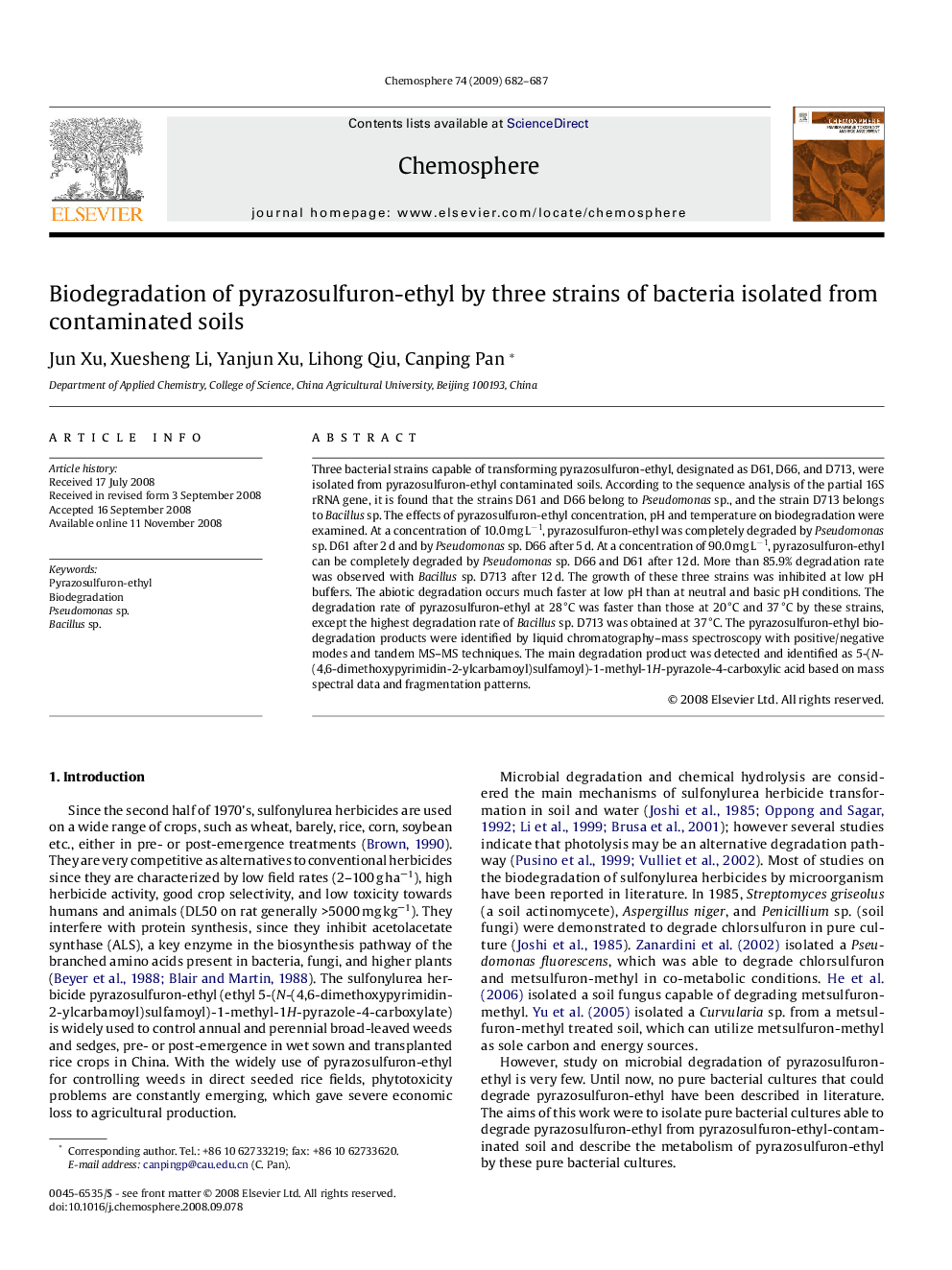| Article ID | Journal | Published Year | Pages | File Type |
|---|---|---|---|---|
| 4412530 | Chemosphere | 2009 | 6 Pages |
Three bacterial strains capable of transforming pyrazosulfuron-ethyl, designated as D61, D66, and D713, were isolated from pyrazosulfuron-ethyl contaminated soils. According to the sequence analysis of the partial 16S rRNA gene, it is found that the strains D61 and D66 belong to Pseudomonas sp., and the strain D713 belongs to Bacillus sp. The effects of pyrazosulfuron-ethyl concentration, pH and temperature on biodegradation were examined. At a concentration of 10.0 mg L−1, pyrazosulfuron-ethyl was completely degraded by Pseudomonas sp. D61 after 2 d and by Pseudomonas sp. D66 after 5 d. At a concentration of 90.0 mg L−1, pyrazosulfuron-ethyl can be completely degraded by Pseudomonas sp. D66 and D61 after 12 d. More than 85.9% degradation rate was observed with Bacillus sp. D713 after 12 d. The growth of these three strains was inhibited at low pH buffers. The abiotic degradation occurs much faster at low pH than at neutral and basic pH conditions. The degradation rate of pyrazosulfuron-ethyl at 28 °C was faster than those at 20 °C and 37 °C by these strains, except the highest degradation rate of Bacillus sp. D713 was obtained at 37 °C. The pyrazosulfuron-ethyl biodegradation products were identified by liquid chromatography–mass spectroscopy with positive/negative modes and tandem MS–MS techniques. The main degradation product was detected and identified as 5-(N-(4,6-dimethoxypyrimidin-2-ylcarbamoyl)sulfamoyl)-1-methyl-1H-pyrazole-4-carboxylic acid based on mass spectral data and fragmentation patterns.
